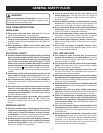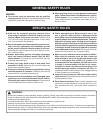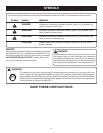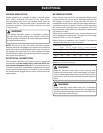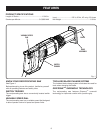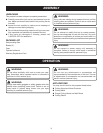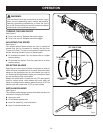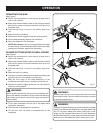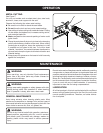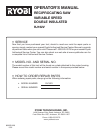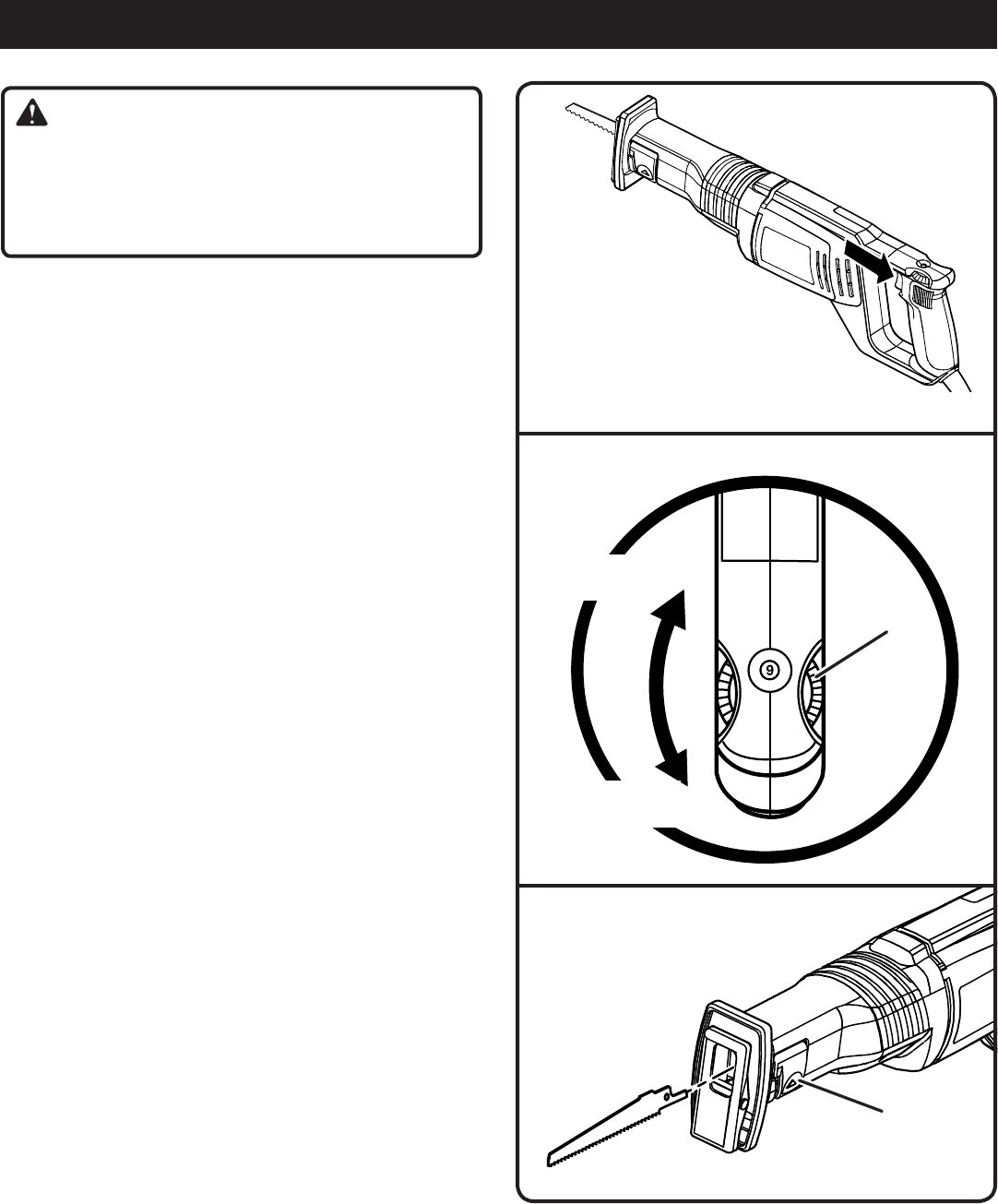
10
TURNING THE SAW ON/OFF
See Figure 2.
n To turn the saw on: Depress the switch trigger.
n To turn the saw off: Release the switch trigger.
ADJUSTING THE SPEED
See Figure 3.
The variable speed feature allows the saw to operate at
speeds that can be increased by rotating the dial from
1 (slow) to 6 (fast). The dial is conveniently located on the
handle, allowing operator control of blade speed.
n To increase the speed: Turn the speed dial to a higher
number setting.
n To decrease the speed: Turn the speed dial to a lower
number setting.
SELECTING BLADES
Selecting the correct type of blade is important in order to
obtain the best performance from the saw. Select the blade
based on the application and on the material you wish to
cut. Selecting the right blade will give you a smoother, faster
cut and prolong the life of the blade.
Blades with fewer teeth, 10 teeth per inch (TPI) are typically
used for cutting wood, while blades with more teeth are
better for cutting metal or plastic. We recommend 14 TPI for
plastics and soft metals and 18 TPI for hard metals.
INSTALLING BLADES
See Figure 4.
The toolless blade change system eliminates the need for
tools when changing the blade.
n Unplug the saw.
n Lift the blade release lever.
n Insert the blade fully, tooth side down.
n Lower the blade release lever.
Fig. 2
Fig. 3
Fig. 4
TO DECREASE
SPEED
TO INCREASE
SPEED
LIFT TO
INSTALL
BLADE
OPERATION
WARNING:
The tool should never be connected to a power supply
when you are assembling parts, making adjustments,
cleaning, performing maintenance, or when the tool is
not in use. Disconnecting the tool will prevent accidental
starting that could cause serious injury.
TOP VIEW OF SAW
SPEED DIAL





